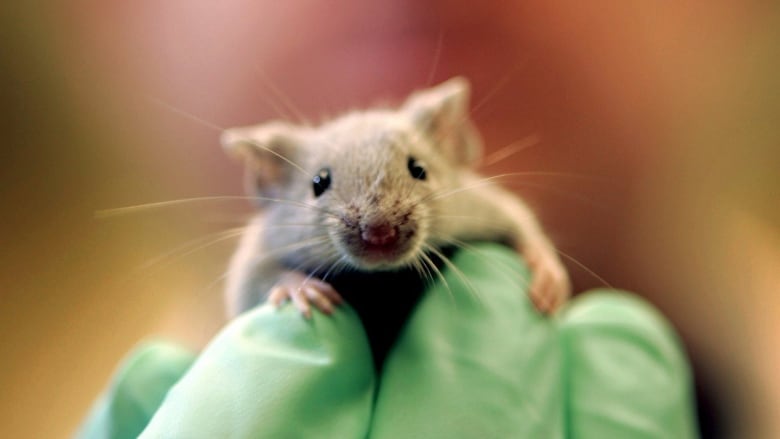Sexism in mouse research can lead to medical harm to women, scientists warn
Most research is on male mice and resulting drugs may be dangerous, ineffective for women

Medical research and new drugs to treat human illness usually start with studies on mice and rats. But that type of research has been traditionally sexist using far more male than female rodents.
Scientists warn that has already led to drugs and treatments that are potentially dangerous for womenand say the approach slows down the development of treatments and drugs that are safe and effective for everyone.
Cara Tannenbaum, scientific director of the Institute of Gender and Health at the Canadian Institutes of Health Research, cited a couple of examples on CBC's The Currentof cases where drug side-effects turned out to be far more harmful in women:
- A stomach drug called cisapridethat was sold in the 1990s under the name Prepulsid was withdrawn by Health Canada in 2000 because it sometimes caused irregular heartbeat and sudden death "in women only," Tannenbaum said. Among the victims was the 15-year-old daughter of former OntarioMP Terence Young. "It's not clear that the drug was ever tested in female animals or minors," Tannenbaum added.
- Health Canada has issued a warning about sleeping pills containing the drug zolpiderm, also known as Ambien, Tannenbaum said. Women are recommended to take half the dose that is prescribed to men. "It was recently discovered that the level of the drug was 45 per cent higher in women the next day, which can lead to car accidents," Tannenbaum said.
Jeffrey Mogil, a neuroscientist and pain specialist at McGill University, saidthere are lots of reasons to suspect men and women respond differently to many different kinds of drugs, but very little actual data.
"We actually don't know the scope of the problem," he told The Current.

'Ethical lapse'
The problem begins with the mouse studies that uncover the biological systems that drugs are designed to target.
The vast majority of those rely on male mice and rats. For example, he estimates that in pain research, 80 per cent of published studies use male mice or rats, even though 70 per cent of people with chronic pain are women.

That means, he said, "You just don't have a clear picture of the biology that you're claiming to understand. And I think it's more than just a wasted opportunity it's actually an ethical lapse."
In some cases, drugs developed by studying male mice may not work in women at all.
Mogil came across an example in his own research. Published studies on male mice showed that blocking immune cells called glial cells could block pain. When Mogil repeated the studies on mice of both sexes, he found they worked in male mice, but not females.
"What we found was these very same manipulations don't do anything in female mice."
Other scientists had already developed pain drugs to block microglia, and had begun clinical trials which in many countries, such as Canada, are required to include both men and women.
"Our data suggest that those clinical trials will fail and lots of money will be wasted," he said.
"In the meantime, there's whole different drugs that could work on women that we're never studying and never bringing forward to the point where it reaches a clinical trial."
Why male mice are preferred
So why doscientists prefer to use malemice? Mogil saidit's largely because of the belief that female animals' hormonal cycles could make the data less consistent. However, he said, that assumption isn't supported by actual evidence.
"In fact, if anything, the data are more variable in male animals."
Tannenbaum said that traditionallyrules also barred women from human clinical trials, out of fears that they could become pregnant and the drugs being tested could affect the developing fetus.
"That has since been changed," she said. "But the culture is slower to change."
TheCanadian Institutes of Health Research, the main federal funding agency for health and medical research, has been trying to address the sex bias in rodent research. Since 2010, researchers have been required to answer questions about whether they will account for sex in their studies.
CIHR's Tannenbaum said that in 2010, only 25 per cent of researchers were taking sex into consideration. "That has risen because of our awareness efforts to 50 per cent."
But she acknowledged, "We definitely need to keep working on it," by raising awareness with scientists applying for grants and educating scientists who evaluate grants. Editors of scientific journals also need to be stricter about requiring data on the sex of the animals in the experiments, she said. And she also recommends that ordinary Canadians bring the topic up with foundations that fund research.
Corrections
- An earlier version of this story said Ambien is the brand name for zolpaclone. In fact, it's the brand name for zolpidem, which has special dosing recommendations for women.Apr 21, 2016 8:12 AM ET












_(720p).jpg)


 OFFICIAL HD MUSIC VIDEO.jpg)
.jpg)



























































































